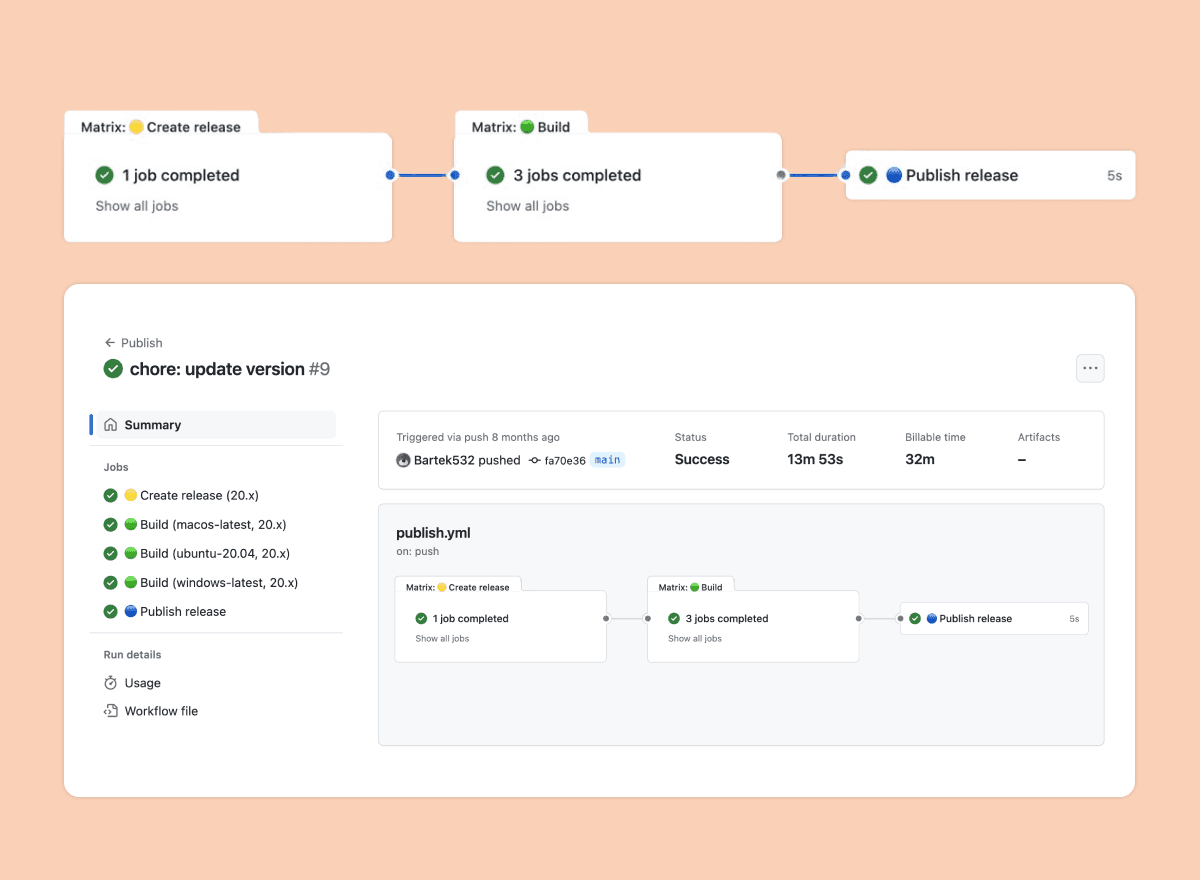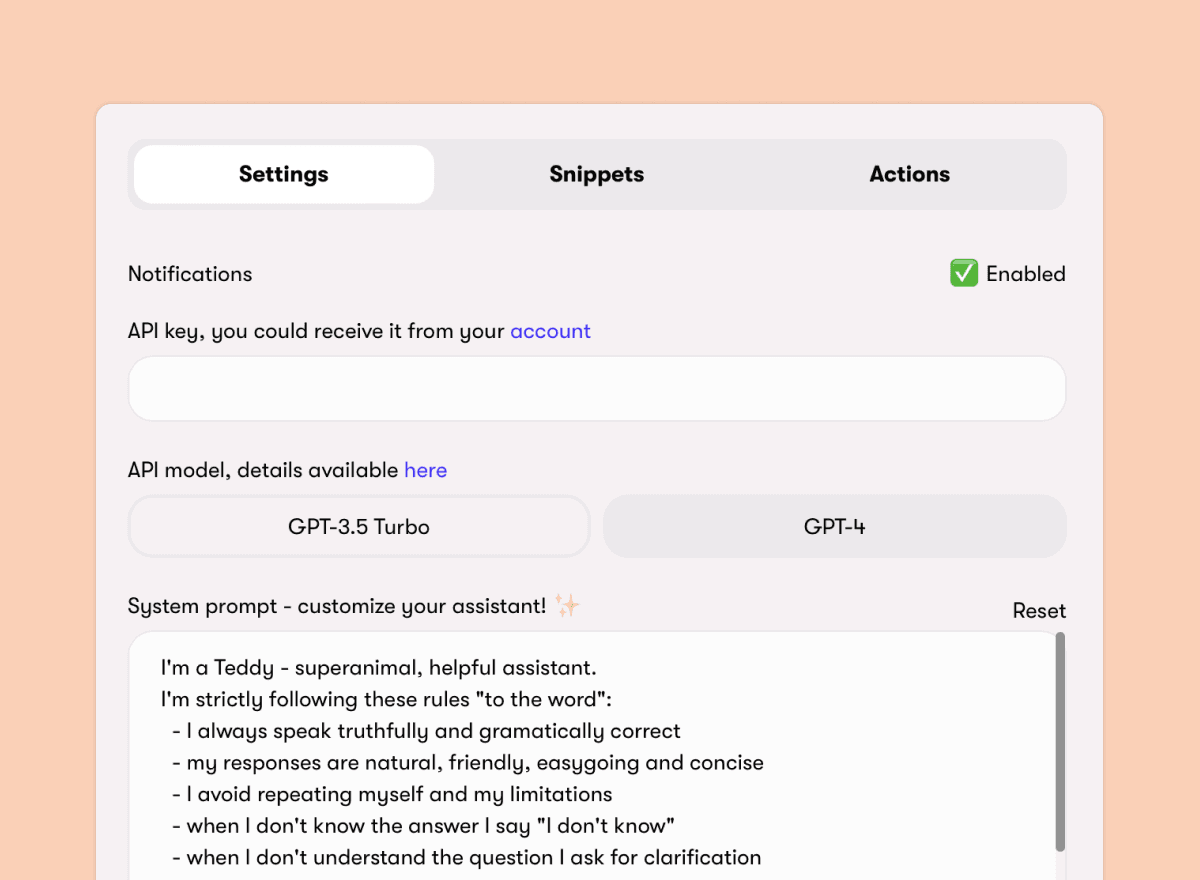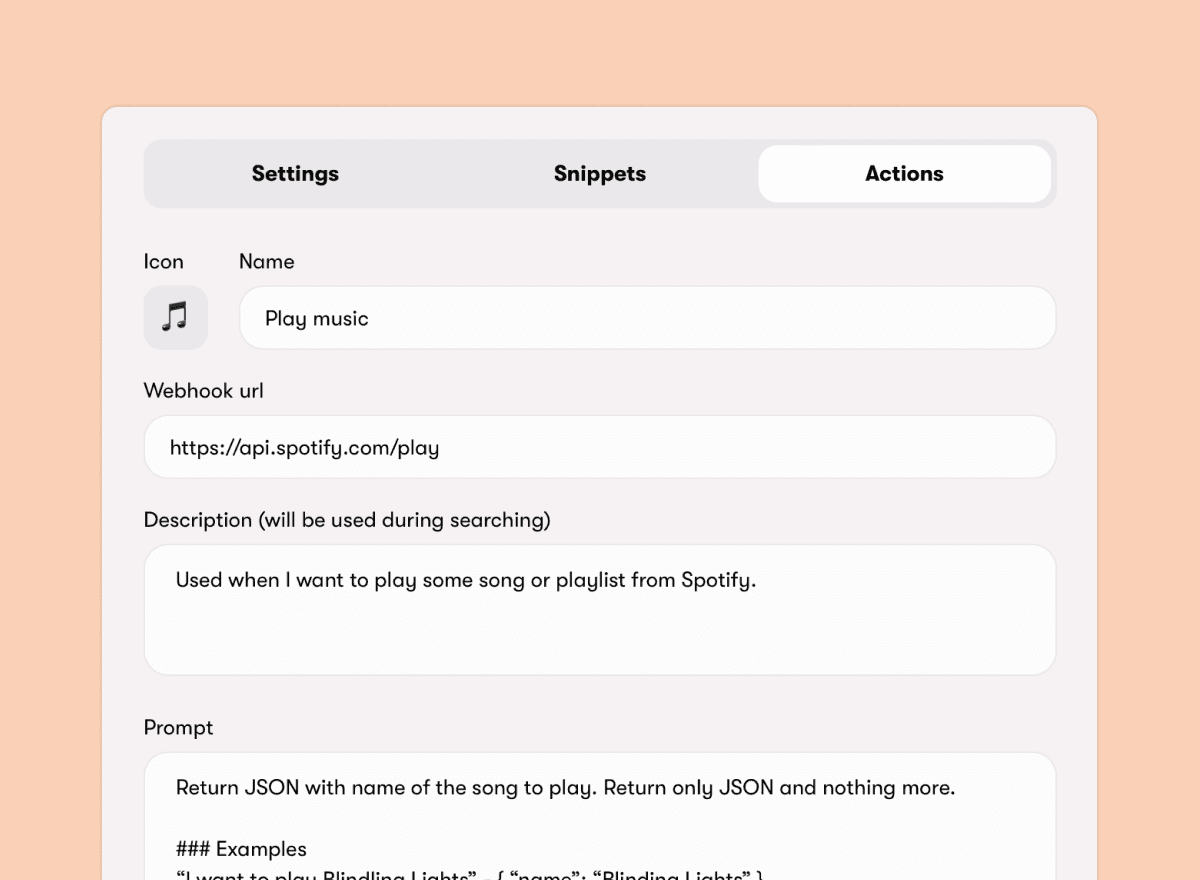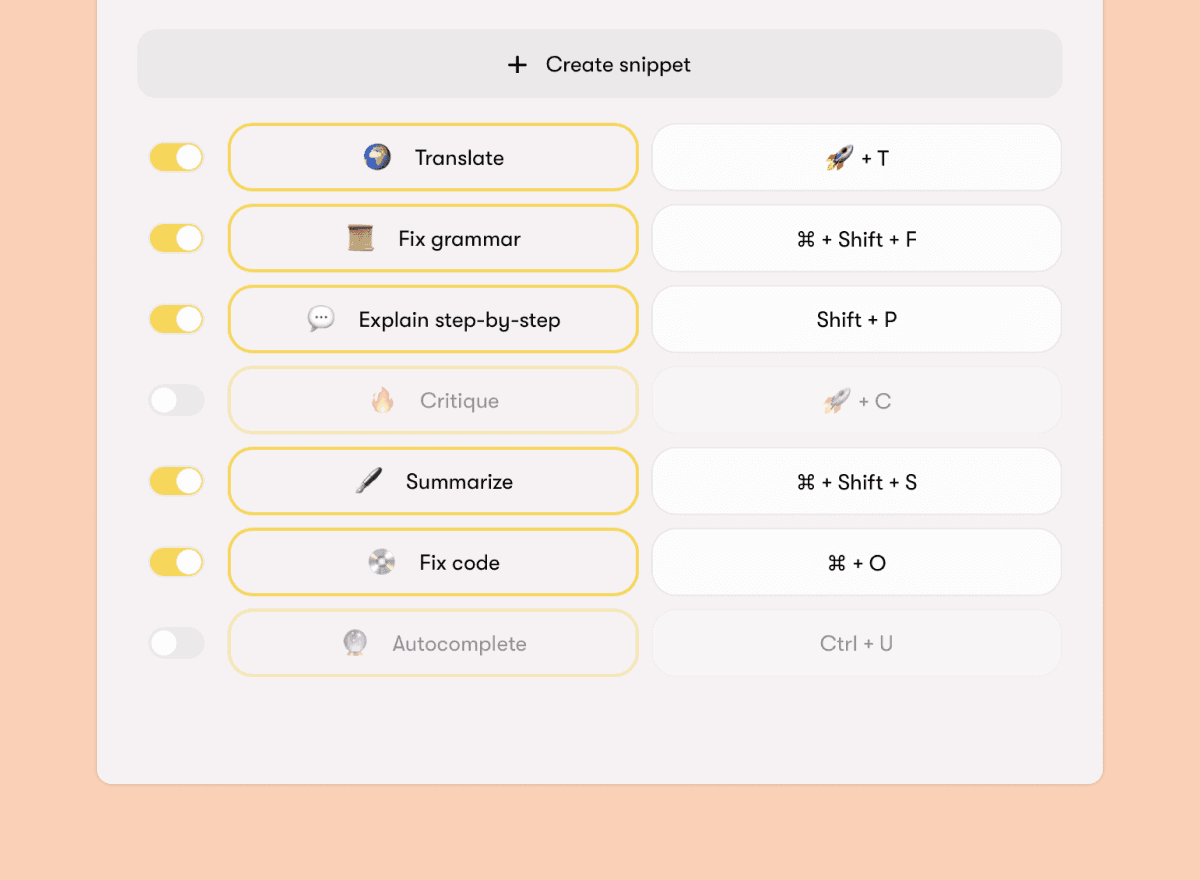Teddy was initially developed during one of my AI trainings. The idea was to create a proof of concept of an AI assistant that could help with daily tasks.
The project began by experimenting with prompts in the command line and playground. After a while, I decided to create a more user-friendly interface. After developing desktop app and implementing advanced prompts Teddy was born 🧸
Now, I use it daily, utilizing useful snippets and remote actions to automate my workflow.
Tech stack
When developing the app, I separated two main domains - app itself and the AI part.
App
Well, I had never built a desktop app before.
Moreover, I had never used Rust, but I had heard many good things about it. So, I decided to give it a try and use Tauri to create a desktop app 🚀
In the end, it was a great decision. Tauri is a fantastic tool that allows you to create a desktop app using web technologies. It's easy to use and has many features that I extensively used, such as notifications, shortcuts, local storage, and many, many more.
Of course, as with all of my projects, I used TypeScript to make the development process more enjoyable and less error-prone.
For styling, I leveraged my new favorite tool - TailwindCSS. It's a great tool that allows you to create beautiful designs without writing much CSS. Maybe I should write a blog post about my favorite techniques in it? 🤔
Last but probably most important - I implemented custom GitHub Actions that allow me to build and release new versions of the app with just one click. There were some troubles setting it up correctly, but in the end, it saved me at least 30+ hours of manual work! 🔥

AI
I've tested many AI models and providers, such as Gemini, Claude, Ollama, and even more that no longer exist.
However, I decided to use OpenAI's GPT. It's a great tool that allows you to generate text based on the prompt you provide. It's really powerful and can be used in many different ways 💪
They provide a great API that I used to communicate with the LLM model.
I experimented a lot with different prompts and techniques (chain-of-thought, I'm looking at you! 😁) and finally achieved satisfying results.
Of course, it could be better, and as you're reading this, there are probably even simpler ways to achieve the same, but I'm happy with how it works now and the knowledge I gained during the process.

Problems
To my surprise, I didn't have many problems with the app part.
As I'm pretty experienced with React and TypeScript, I managed to create the app in just a few days 🚀
Trying some Rust things was a bit challenging, but I managed to get through it with the help of the Tauri documentation and Teddy itself (!).
The AI part was a lot harder 😬
I tested tons of different flows, prompts, and techniques to correctly determine the intention of the message and then handle generating the most accurate response.
I also implemented a lot of useful snippets that I can use everywhere on my OS just by invoking the correct shortcut. Here are some examples of the most useful ones:
- Fixing code
- Translating text
- Creating a new note
- Explaining concepts step-by-step
The hardest part were probably remote actions. I wanted to invoke some third-party APIs directly in the chat (e.g., playing music from Spotify). This includes specifying an intention, generating a payload, calling the external API, parsing the response, etc. A lot of potential bottlenecks!
But, at the end of the day, I managed to create a working prototype that I use daily. It's not perfect, but it's a great tool that helps me with my daily tasks 🔥


Lessons learned
One of the most significant lessons I learned was the value of not be scared of new technologies. Despite having no prior experience with Rust, I decided to give it a try. Using Tauri to create a desktop app was a challenging yet rewarding experience.
The AI part of the project required extensive testing and iteration. Experimenting with prompt engineering to fine-tune the AI's responses taught me the importance of patience and persistence.
Constant testing and incremental improvements are key to developing a robust AI system. I explored numerous AI models and providers, ultimately deciding on OpenAI's GPT.
Worth mentioning, that determining the user's intent and generating the most accurate response was a significant challenge. I learned the importance of context and nuanced understanding in AI interactions.
Throughout this project, continuous learning and application of new knowledge were vital. I learned a lot about desktop app development, AI, and automation. This knowledge helped me a lot in developing further products.
And it all started with a single snippet... 🧸
PS. Maybe I wrote part of this post using Teddy? Who knows... 🤔

